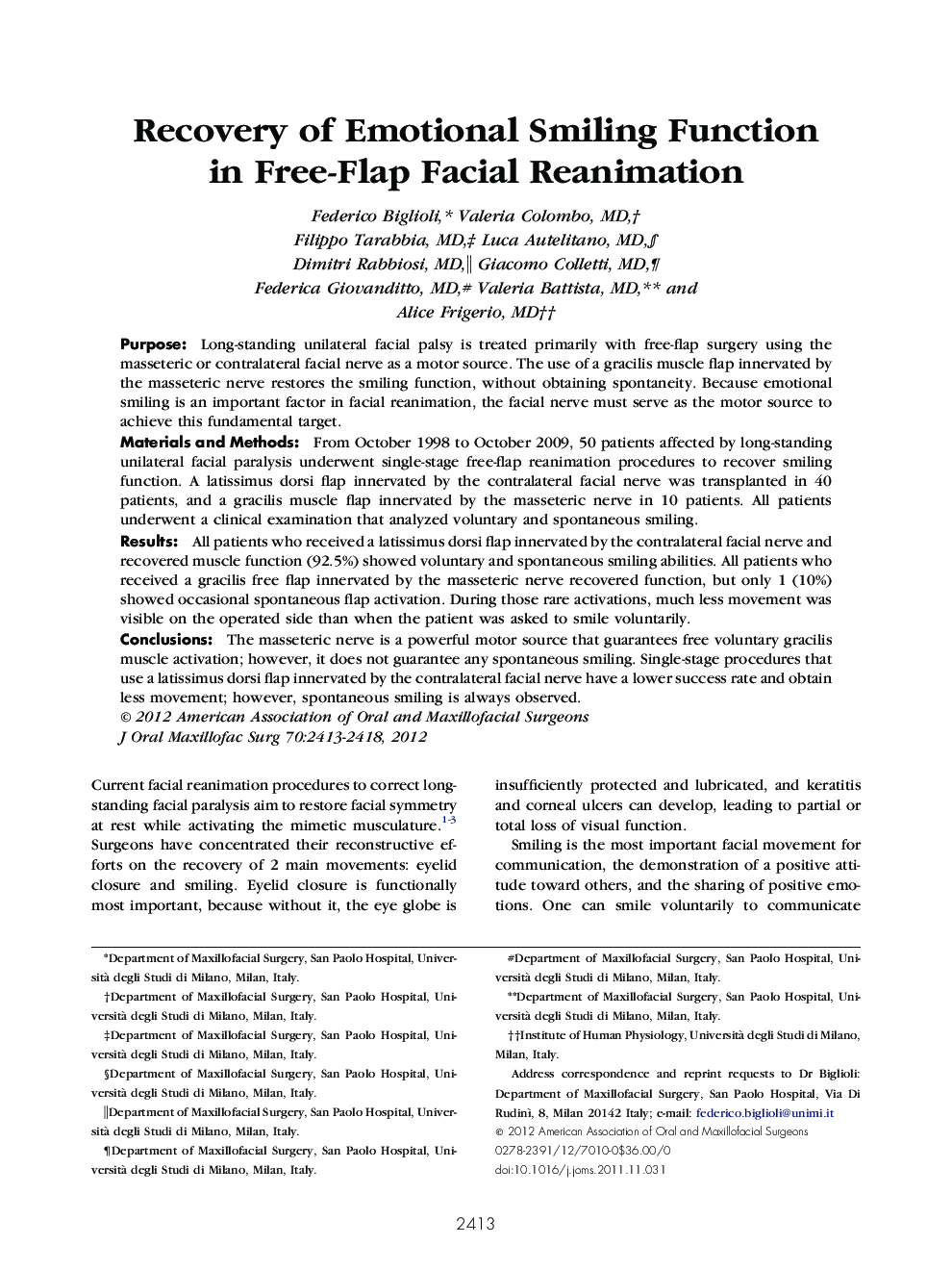| Article ID | Journal | Published Year | Pages | File Type |
|---|---|---|---|---|
| 3156654 | Journal of Oral and Maxillofacial Surgery | 2012 | 6 Pages |
PurposeLong-standing unilateral facial palsy is treated primarily with free-flap surgery using the masseteric or contralateral facial nerve as a motor source. The use of a gracilis muscle flap innervated by the masseteric nerve restores the smiling function, without obtaining spontaneity. Because emotional smiling is an important factor in facial reanimation, the facial nerve must serve as the motor source to achieve this fundamental target.Materials and MethodsFrom October 1998 to October 2009, 50 patients affected by long-standing unilateral facial paralysis underwent single-stage free-flap reanimation procedures to recover smiling function. A latissimus dorsi flap innervated by the contralateral facial nerve was transplanted in 40 patients, and a gracilis muscle flap innervated by the masseteric nerve in 10 patients. All patients underwent a clinical examination that analyzed voluntary and spontaneous smiling.ResultsAll patients who received a latissimus dorsi flap innervated by the contralateral facial nerve and recovered muscle function (92.5%) showed voluntary and spontaneous smiling abilities. All patients who received a gracilis free flap innervated by the masseteric nerve recovered function, but only 1 (10%) showed occasional spontaneous flap activation. During those rare activations, much less movement was visible on the operated side than when the patient was asked to smile voluntarily.ConclusionsThe masseteric nerve is a powerful motor source that guarantees free voluntary gracilis muscle activation; however, it does not guarantee any spontaneous smiling. Single-stage procedures that use a latissimus dorsi flap innervated by the contralateral facial nerve have a lower success rate and obtain less movement; however, spontaneous smiling is always observed.
